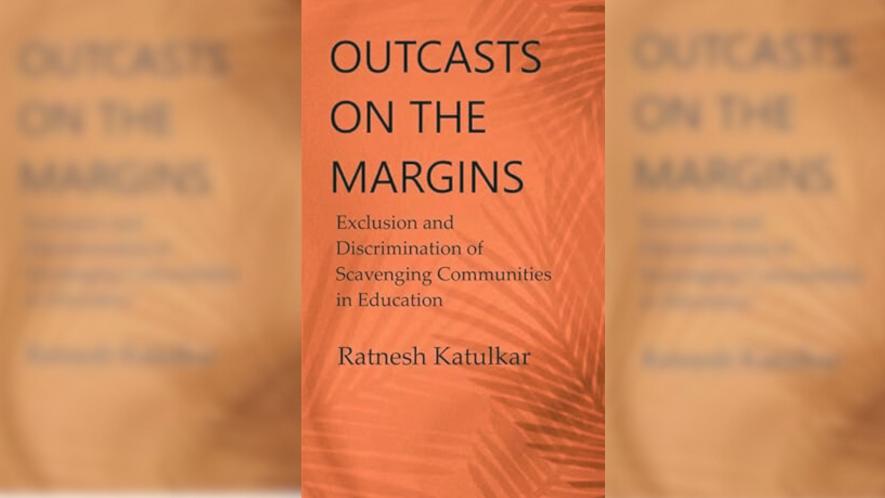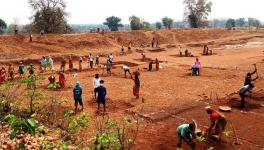Looking at Scavenging Communities Through Ambedkar’s Lens

Exclusion and discrimination are widely discussed topics in the field of social science. Many books and articles have been written on the subject. However, most of these studies are based on either Marxian or Gandhian perspectives. There is a lack of research on discrimination and exclusion from the perspective of Dr B R Ambedkar.
Ratnesh Katulkar's recent book, Outcasts of the Margins: Exclusion and Discrimination of Scavenging Communities in Education, attempts to fill this gap. The author has used Ambedkar's writings to deal with the issue of exclusion and discrimination of scavenging communities in education in a concise manner. It is observed that Ambedkar, in academics as well as in general writings, is restricted to mainstream dalit problems, while his thoughts and ideas on extreme vulnerable sections often remain under the carpet. An exception is his much-referred quote: “In India, a man is not a scavenger because of his work. He is a scavenger because of his birth, irrespective of the question of whether he does scavenging or not”. This book not only incorporates Ambedkar's quotes in almost every chapter but also presents it through Ambedkar's perspective.
This book is based on the insights gathered through an empirical study undertaken by the author in Indian Social Institute from 2014 to 2019, to gather evidence of discrimination in education, the causes and consequences on the attainment of education of children from households engaged in a range of occupations considered ‘unclean’.
Over more than six years, Katulkar was in direct contact with the scavenging and allied communities across the states of Haryana, Himachal Pradesh, Bihar, Jharkhand, Madhya Pradesh, and Chhattisgarh, and was indirectly associated with communities in Rajasthan and Uttar Pradesh through field investigators and research partners.
Combining the methodology of sociology and history, the book explores the roots of exclusion and discrimination faced by the scavenging communities in India. It draws on both historical writings and contemporary literature on the subject to provide a comprehensive analysis.
The role of dominant religious and social ideologies in the marginalisation and exclusion of Dalits in ancient India is discussed, as well as the subsequent role of Buddhism, Islam and Christianity in propagating mass education.
The book also critiques the British education system, which was initially inclined toward sustaining Brahmanic hegemony. The author argues that Macaulay's Minute speech, despite being praised by present-day dalit intellectuals, reflects only the arguments of contemporary progressive Brahmins and fails to insist on mass education or inclusive policies. The policy was based on the 'downward filtration theory,' which aimed to educate a few persons from the upper and middle classes, resulting in keeping marginal communities away from the education system.
Moving to the present time, this book attempts to understand the life of a poor dalit in educational institutes and the broader society and to expose the practices and socio-cultural pre-conditions of society that keep scavenging and allied communities in the trap of occupational immobility. It explores the processes that have created and fostered vulnerability and marginality for a section of society.
The cases of the hard practice of discrimination, such as denying school admission, harsh punishments and forcing scavenging students to clean toilets, and discrimination in mid-day meals and other activities which often appears in media reports, is also depicted.
But, some of the unique cases of soft form of discrimination, for instance, in some cases, the forward caste students visit the homes of their scavenging community friends and accept water and food in their homes without hesitation. On the face of it, there seems to be no existence of purity-pollution customs among them. Yet, this relationship has strict limitations and self-defined rules. In such cases, it is always the entitlement of forward caste friends to visit their scavenging community friends but never vice-versa. The poor dalit friend simply cannot visit the homes of their forward caste counterpart.
Such a practice shows that among the younger generation in some instances, caste may not matter much but its sanctity continues to hold at a broader level. It is noticed that such inter-caste-friendly relations are confined to males; no case of fraternity between forward-caste girls and scavenging girls was found in the field study.
Another aspect that makes this book different is that, unlike in research papers, it does not study the scavenging community in isolation, but attempts to understand its problems as situated in the wider caste system.
The castes engaged in the lowest ladder of the hierarchy are thus bound to be the victims of discrimination even by the castes that are a little higher in the caste hierarchy. For instance, the castes such as Chamar, Dusadh and Mahar treat the castes such as Valmiki, Bhangi, and Mehtar as lower to them, and there are instances of untouchability practised against them.
Such treatment of the castes engaged in scavenging rightly resulted in the coining of a new phrase ‘dalits within dalits’. Yet, one striking feature of the discrimination is that there is not a single case of mass clashes between two dalit castes which, on the contrary, is common between dominant castes and dalits.
There is an exclusive chapter on the problems of women and girls who face triple discrimination due to their caste, class as well as gender. In many parts of India, girls from the scavenging communities are being admitted to schools. But they are also burdened with the responsibilities of the family. In this tussle, education becomes secondary while household responsibilities become their main liability. It is known that the work participation rate of women in sanitation work is quite high. Therefore, the responsibility of taking care of younger siblings, in most cases, becomes the prime responsibility of the elder daughter. In the case of a newborn, the responsibility becomes her burden. In the beginning, the elder daughter tries to manage the responsibilities with the discontinuation of her classes and attempts to manage both school and household chores. Soon, however, caring for the newborn sibling becomes her full-fledged responsibility. With continued absence from school, this eventually leads to her dropping out of school.
The last part of the book critiques the existing policies and programmes of the government and suggests an alternative approach. The focus of the book is on exclusion in education, yet education is not looked at in isolation but in conjunction with larger systemic factors that are beyond the control of students but affect their educational prospects greatly.
The life of scavenging community students is challenging on campus. The multiple layers of discrimination and exclusion alongwith poverty and lack of a support system, create so many hurdles that very few of them manage to fight and continue their education. A large chunk of such students is bound to discontinue their education, mainly middle school onward. School education has failed to address issues of self-worth, dignity and livelihoods and, therefore, has undermined students’ confidence in education as a vehicle for social mobility.
Overall, this book is a complete elaboration of the problems of scavenging communities in accessing education. This is a must-read not only for academicians and policymakers but also for laypersons who wanted to understand the hidden reality of society.
Title: Outcasts on the Margins: Exclusion and Discrimination of Scavenging Communities in Education by Ratnesh Katulkar. Published by GenNext Publication. Paperback 224 pages.
Get the latest reports & analysis with people's perspective on Protests, movements & deep analytical videos, discussions of the current affairs in your Telegram app. Subscribe to NewsClick's Telegram channel & get Real-Time updates on stories, as they get published on our website.
























